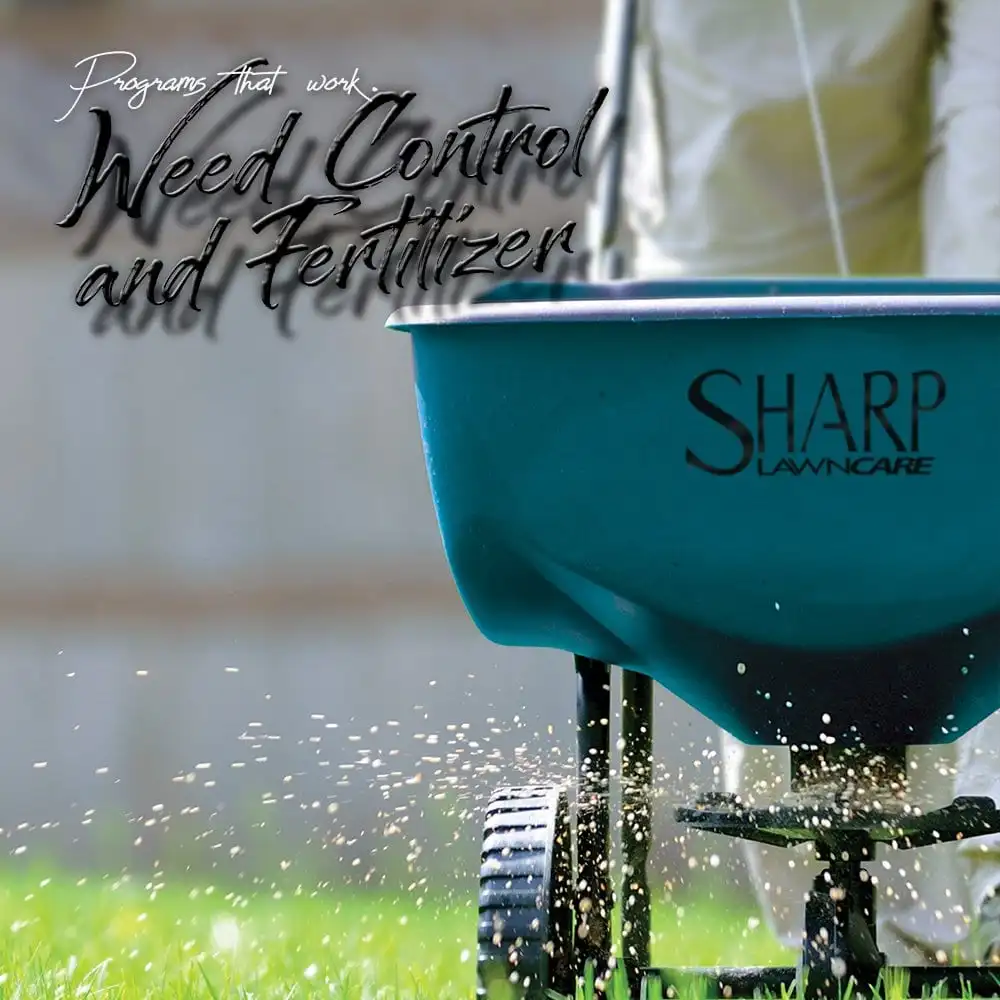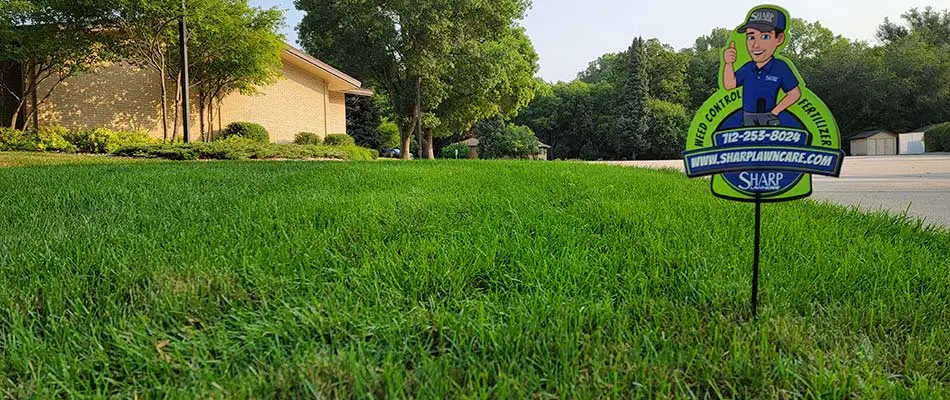Is fertilizing your lawn a worthwhile investment of time and money? You’re already seeding your lawn, mowing it, watering it, and protecting it from weeds and pests. Isn’t that enough?
Grass needs certain nutrients to grow, those nutrients being nitrogen (N), phosphorus (P), and potassium (K). Nitrogen helps with the production of chlorophyll, which is essential to photosynthesis, which is vital for healthy leaf growth. Phosphorus is good for the development of healthy roots and stems, and potassium, which your body uses to help with blood clotting, strengthens lawns by making them more resistant to drought and disease.

Unfortunately, rain and watering wash these nutrients away, and in many lawns they do not occur naturally in concentrations high enough to have a replenishing effect.
Types of Fertilizers
If you really want to be thrifty about it, there is a natural fertilizer that is easy to use and won’t cost you anything extra: you can just leave grass clippings on your lawn after you cut it. That has drawbacks, though, with the main one being that large clumps left on the lawn are ugly and will kill the grass beneath them. Ultimately, that costs you more time and money to reseed and to combat the weed growth that dead, bare patches invite.
We recommend using an industrial fertilizer. The problem here is that the store is going to have many different options, and the differences are not just in brand names but in the concentrations of those nutrients your lawn needs.
A lawn needs fertilizer with a high level of nitrogen (like this one). On a bag or package, there likely will be what we call the N-P-K ratio showing the relative percentages of each nutrient. If, for example, the ratio is 16-4-8, the product is 16% nitrogen, 4% phosphorus, and 8% potassium.
Knowing the right combination to get means also knowing what type of grass you have and what its needs are. Many people don’t know those things, and it’s best to consult a lawn-care professional about that.
How to Apply Fertilizers
When you’re choosing a fertilizer, you also have to decide how you want to apply them. Do you want a quick-release formula or a slow-release one? What does that even mean?

Quick-release fertilizers come as sprays. They tend to be cheaper, and they work faster, producing results within a few weeks. Their drawback is that they don’t last as long as slow-release fertilizers do, they thus have to be reapplied more often, and they can “burn” the lawn if overapplied.
Slow-release fertilizers are in granular form and are applied via adjustable drop spreaders or broadcast spreaders that allow you to control how much you are putting down at a time. Their drawbacks are that they work more slowly and that they cost more. However, compared to quick-release fertilizers, they last longer, they don’t need to be reapplied as often, and they are harder to misuse (and thereby cause damage to the lawn).
Whichever type you use, it’s also important to make sure the fertilizer does not get into the watershed and taint it. Clean up spills or excess amounts, especially on surfaces like driveways and sidewalks where they could be washed away into runoff channels and storm drains. Here’s a cheap spill kit that can help. Avoid overwatering, which could cause runoff. Don’t spray on windy days.
When to Apply Fertilizers
So much of lawn care comes down to timing. The most common times for fertilization are early spring, late spring, summer, and fall.
But it’s a little more complicated than just going out a few times and spreading fertilizer. Fertilizer works best at times of fast growth (early spring and fall), but there are other considerations. One of the biggest is whether you are using or plan to use a weed-killer treatment such as a pre-emergent or a post-emergent. Using fertilizers and herbicides at the same time can mean ineffective results from the fertilizers and could block or kill grass growth.
While it is possible to do both at once, it’s a task best left to the experts, as is the decision about exactly what times of year to fertilize. We know the Sioux City region’s climate patterns and grass types well, and we recommend spring, summer, and fall treatments. A spring treatment helps things get off to a great start, a summer treatment maintains growth through the heat and into the fall, and a fall treatment protects the lawn and ensures a quick start the following spring. Sometimes we do back-to-back monthly applications, and sometimes we spread treatments out as much as 60 days apart.
The Benefits from Fertilizing
The distinct benefits from fertilizing are the following:
- Thicker, more uniform growth
- Higher resistance to lawn-harming disease
- Fewer insect pests– thick, healthy grass is harder for them to thrive in.
- Fewer weeds– thick grass with strong roots don’t leave as many opportunities for weeds to grow.
- Soil protection– that thick grass and those strong root systems keep the soil from washing off, furthering the growth and health of the lawn.
If you have any questions or want to request a quote, let us know!
We’ve linked tools and products in this article that may help you complete this work yourself. As an Amazon Associate, we earn from qualifying purchases.




Comments (0)
Thanks for your comment!
Thanks for your feedback! Your comments have been successfully submitted! Please note, all comments require admin approval prior to display.
Error submitting comment!
There is a problem with your comment, please see below and try again.